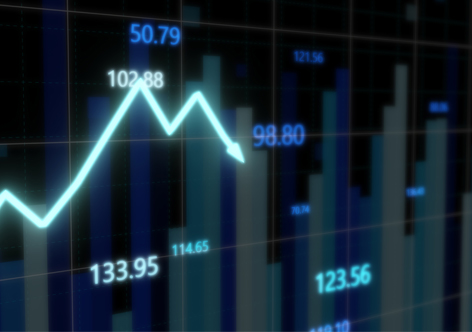
Anthony Raza, UOBAM Senior Director and Head of Multi-Asset Strategy, shares his thoughts on current market drivers, and what would prompt him to turn more constructive
Clients have been asking us whether it is time to re-enter equity markets. To answer this question, it is useful to state upfront that we generally believe market corrections to be attractive valuation resets for markets, and that it is frequently worth buying into corrections. In the case of this current Russian-Ukraine conflict, there are a few key considerations worth noting.
Rising rates
Firstly, it is important to assess the market impact of today’s geo-political tensions in the context of the correction that had already started in January. Global equities as measured by the MSCI AC World Index declined by 8.0 percent in January largely on concerns of rising inflation and interest rates. This correction already caused a large number of global investors to turn more defensive.
The correction brought out an interesting tension between investment approaches. Monetary policy-driven investors are largely influenced by a world view that investment markets are propped up by supportive monetary policy from the world’s central banks and supportive fiscal policy spending by governments around the world. They point to the high correlation, especially over the past decade, between central bank assets and global equity markets.
Therefore, once the US Fed had committed to aggressively raising rates, these investors doubted the ability of markets to sustain performance and became leaders in driving the correction in January.
Strong growth fundamentals
In contrast, those with a more fundamental investment style were more bullish on 2022. These fundamental-driven investors tend to highlight that equity market performance is even more correlated to earnings growth than to central bank balance sheets. Additionally, in every cycle in the last 40 years, there has been volatility around the first rate hike. Yet markets always went on to make new highs in the years after the first rate hike, even in the face of sustained rate hikes.
For these investors, as long as growth is sustained, then markets are sustained. And the growth outlook for 2022 is strong. Global GDP growth was expected (prior to the Ukraine invasion) to grow at 4.4 percent, which would be the second highest growth rate over the last 15 years and would be in the top 20 percent of growth levels in the last five decades. Corporates have been very resilient in the pandemic and global corporate earnings are expected to be significantly higher than before the pandemic. The earnings growth outlook is in line with the robust global growth outlook.
It is a shame that the onset of the Russia-Ukraine crisis means global markets will never see the pure conclusion of this perfectly set up test case between the opposing market forces of tightening monetary policy versus expanding corporate earnings.
Economic and market resilience
Like most other market observers, we did not see the logic of the full scale invasion of Ukraine that is currently unfolding. Our expectation was that it was necessary for President Putin to show force in order to extract security concessions or even to annex the already Russia-controlled breakaway provinces in eastern Ukraine. We assessed that the global market impact of such moves would have been minimal.
Now that the geopolitical risks have escalated and global equity markets have declined further from the January lows to a full 10 percent correction from the start of the year, many investors are tempted to buy this dip. This is hardly surprising, given that in the last 20 years, virtually all corrections arising from geopolitical risks have been an opportunity to buy at better valuations.
We note that the corrections from the Gulf War in 1990, Iraq war in 2003, invasion of Crimea in 2014, and the North Korea tensions in 2017 all saw market corrections that quickly recovered. Also, on other issues that appeared to create the potential for economic chaos such as Brexit and the COVID pandemic, the pain was short-lived. It turns out that economists are often surprised by how resilient economies can be.
Known unknowns
In the current case of the invasion of Ukraine, it is plausible that there is a surprisingly quick cease fire. It is also possible that Russia quickly completes its invasion of Ukraine and the attention of the markets get shifted to other issues. While economists are concerned about the economic impact of sanctions, they may be too worried as they turned out to be about Brexit.
We are tempted by such thinking, but believe that the risks are still too high, and in some cases, unquantifiable. There are a few issues of particular concern. The West has cut off Swift access to the top Russian banks and blocked the Central Bank of Russia from liquidating its foreign reserves in order to support its currency. The inability to meet payments for Russian gas could be compounded if Russia decides to retaliate by blocking gas to Europe, thereby raising the potential for a European energy crisis. Meanwhile, rising energy prices are set to make the region’s inflation problems worse and limit central bank options on how to deal with sanctions-induced economic shocks. This combination of factors risks a European recession.
The blocking of Swift to top Russian banks also raises uncertainties around banking systems. When Lehman failed it didn’t seem like it should affect the global financial system, but the connection of global banks is important and remains a risk especially to German banks that have more Russian assets.
There is also the risk that this war does not end quickly. If instead a more oppressive approach is adopted that results in large and ongoing civilian casualties, Europe may get pulled into more direct military support of Ukraine. In this case, a drawn-out insurgency conflict may ensue, and sabotaging the Russian pipelines that go through Ukraine would be a possible insurgent strategy. Even greater than the risk of the war going well for Putin is the risk that it goes badly, as this elevates the risk of as-yet- undiscounted retaliation from Russia including, as some experts have already warned, the chance of cyber warfare against key Western financial systems.
We are prioritising risk management
In response to the January correction, our view was to buy the dip. Our recommendation was that earnings growth would be the larger driver of equity markets in 2022 rather than interest rate hikes. And in fact, by early February, global equity markets had recovered 50 percent of the drawdown in January.
But by late-February, in the final run up to the invasion, both our quantitative risk control indicators and qualitative risk assessments suggested unacceptably high levels of volatility. This led us to the decision that it was more important to manage downside potential than seek top returns.
As such, we reduced our equity exposures, raised cash, and increased our commodities and alternative investments. We had previously been bearish fixed income due to the rising rate environment, but with growth at risk, we adopted a more positive stance. We also reduced the interest rate hedges that we previously had in place.
The inflation outlook remains complicated, and there are concerns that rising oil prices could trigger more inflation and force central banks to raise rates even more. However overall, we think the greater risk is that growth will slow. This would ease the current overheated environment that is driving inflation up. In the end we would describe our current mode not as being overly bearish but rather simply prioritising risk management over return maximisation.
Finally, as events remain fluid, we are closely watching the possibilities of a sooner than expected end to hostilities either through an agreement or through quick victory that could start to reduce uncertainties. The extent of retaliation and the flow of oil and gas from Russian to Europe are also crucial. If these remain intact, then we may de-escalate our view of the economic risks.
Meanwhile we remain ready to take calculated risks to achieve returns, and continue to keep a close eye on economic activity indicators and especially the Purchasing Managers’ Index (PMI) to help us anticipate how significant the economic impact of the conflict may be, both inside and outside Europe.. We also have inflation and central bank policy as key issues to track. The concerns over interest rate hikes started the correction in January and remain part of the year-to-date drawdown. Notably, if central bank commentary seems to factor in the risks of economic weakness as a justification to slow expected rate hikes, then it is likely that markets see relief on this issue, even if Ukrainian tensions remain high.
Positive signals on the above issues would be triggers for us to consider turning more constructive on markets. On the other hand, negative signals would cause us to question whether markets have fully considered the extent and duration of potential drawdowns.
This publication shall not be copied or disseminated, or relied upon by any person for whatever purpose. The information herein is given on a general basis without obligation and is strictly for information only. This publication is not an offer, solicitation, recommendation or advice to buy or sell any investment product, including any collective investment schemes or shares of companies mentioned within. Although every reasonable care has been taken to ensure the accuracy and objectivity of the information contained in this publication, UOB Asset Management Ltd ("UOBAM") and its employees shall not be held liable for any error, inaccuracy and/or omission, howsoever caused, or for any decision or action taken based on views expressed or information in this publication. The information contained in this publication, including any data, projections and underlying assumptions are based upon certain assumptions, management forecasts and analysis of information available and reflects prevailing conditions and our views as of the date of this publication, all of which are subject to change at any time without notice. Please note that the graphs, charts, formulae or other devices set out or referred to in this document cannot, in and of itself, be used to determine and will not assist any person in deciding which investment product to buy or sell, or when to buy or sell an investment product. UOBAM does not warrant the accuracy, adequacy, timeliness or completeness of the information herein for any particular purpose, and expressly disclaims liability for any error, inaccuracy or omission. Any opinion, projection and other forward-looking statement regarding future events or performance of, including but not limited to, countries, markets or companies is not necessarily indicative of, and may differ from actual events or results. Nothing in this publication constitutes accounting, legal, regulatory, tax or other advice. The information herein has no regard to the specific objectives, financial situation and particular needs of any specific person. You may wish to seek advice from a professional or an independent financial adviser about the issues discussed herein or before investing in any investment or insurance product. Should you choose not to seek such advice, you should consider carefully whether the investment or insurance product in question is suitable for you.





